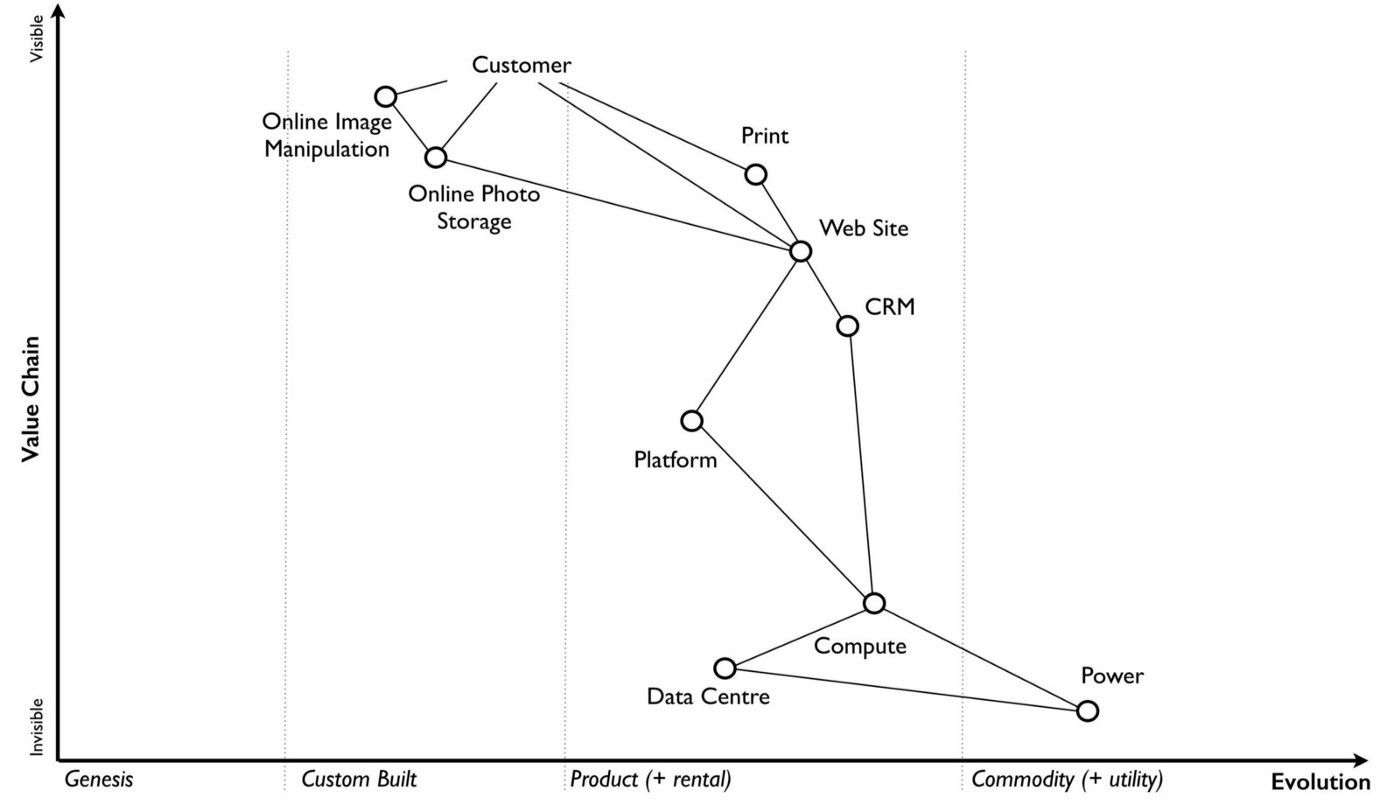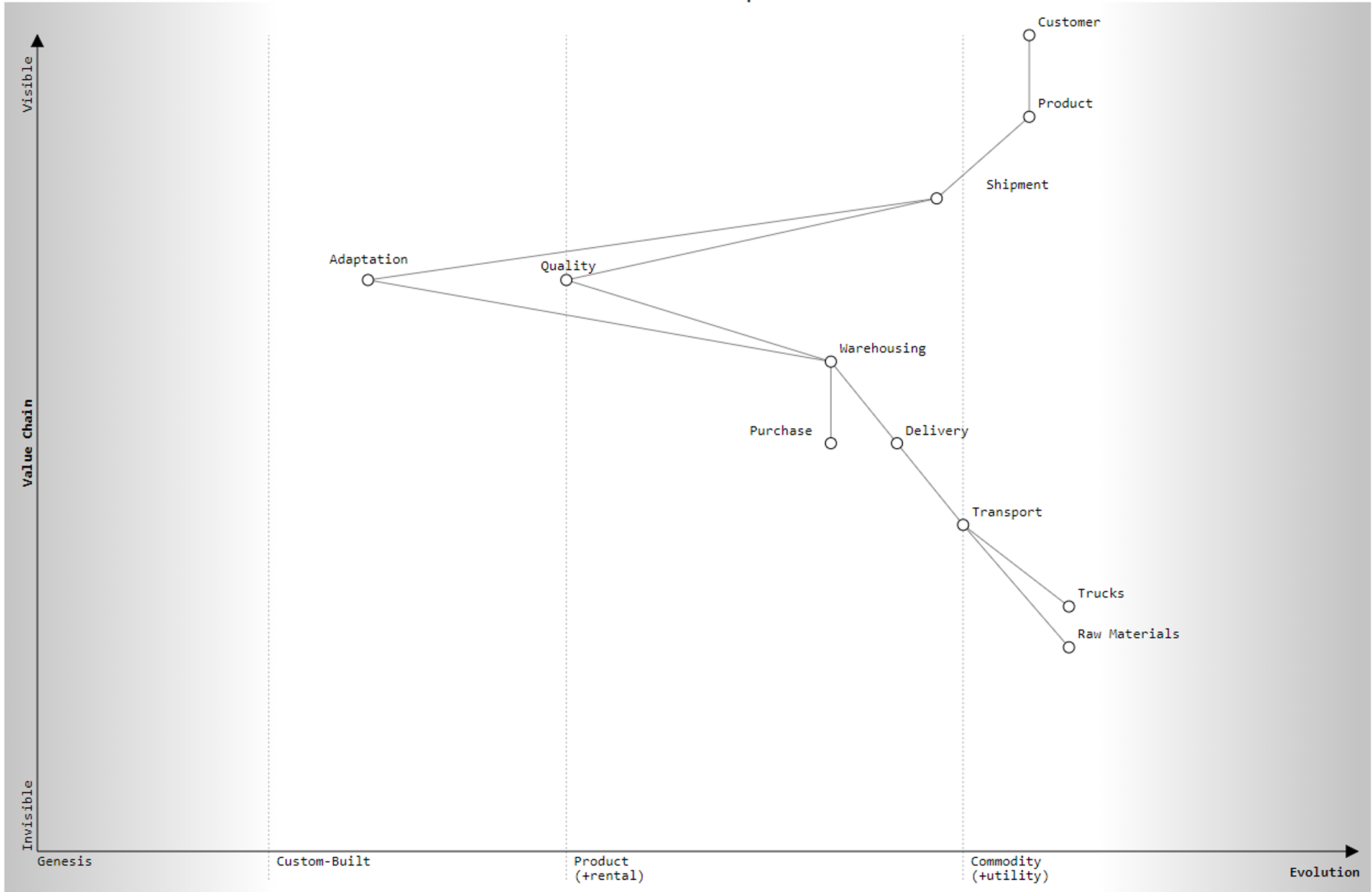All tools are summarized in Tools for a Consultant’s Work - Summary.
Wardley Map
Wardley Maps are a good idea when you need to choose a solution that fits your problem. Named after Simon Wardley, an English advisor and consultant who first used this mapping technique, the map answers the question “What is our business environment?” and helps select the appropriate solution.
Unfortunately, companies often choose tools based on “gut feeling” rather than understanding their market situation and how the chosen solution fits into the current context. Systems are built from scratch when a ready-made product from the market would suffice, or a ready-made product is implemented in an area of competitive advantage, ultimately limiting the ability to adapt to customer needs.
Wardley Maps - https://medium.com/wardleymaps
A Wardley Map focuses on analyzing customer needs based on the maturity of market solutions (their evolution).
- Vertical Axis – Value Stream:
- Start by mapping your customer and their needs, which you aim to fulfill. Then, mark your capabilities to meet these needs, delving deeply into basic resources (computing power, electricity).
- Horizontal Axis – Maturity of Solutions:
- Simon Wardley describes four stages of solution evolution:
- Genesis: Emerging market where ideas are being discovered, and customer needs are unknown.
- Custom: Forming market where first custom solutions meet specialized customer needs.
- Product: Maturing market with growing demand where customers understand how to use products.
- Commodity: Fully mature market where solutions are widely available and standards are known and accepted.
Mapping your value stream onto the maturity axis creates a graph that can be used, for example, to assess actions in the context of implementing IT systems:
- The closer an area is to the customer and less mature, the better it is to use a custom-built solution. Customer needs are not well known and may change frequently. A custom solution can adapt to these changes quickly.
- The more mature and further from the customer an area is, the better it is to use available market solutions. Needs are well known, with little chance of change. Implementing a market solution will have all standard functionalities without the need to build from scratch.
Wardley Maps can also be used to analyze which people to assign to specific teams, how to introduce market changes, cost analysis, and more. More details can be found in Simon Wardley’s extensive collection of articles.
Example of Use
A company in the agricultural sector was considering which IT solution to choose for managing their processes of transport, storage, quality control, product processing, and sales. There was a strong desire to write their own software from scratch to mirror all areas of the company’s operations.
After creating a Wardley Map, it became clear that only two areas (quality control and product processing) were in the emerging markets section. Market solutions did not fit their needs, and implementing them would limit the ability to adapt to these departments' needs.
On the other hand, the other company areas were based on market standards, and implementing new solutions would duplicate existing solutions from SAP, Comarch, or Unit4. The cost of duplicating these functions would be enormous and still wouldn’t match the third-party systems.
The decision was made to go in two directions: a custom solution for new areas and standard solutions for known areas. This approach would use ready-made components and deliver functionalities faster while allowing the system to adapt to the changing needs of departments.
Why is it Beneficial?
A Wardley Map is a great tool that brings business and technical people together, enabling them to share their understanding of the business environment. The map clearly shows what actions should be taken. While mapping requires some practice, even the first iterations provide significant value to the mappers.





